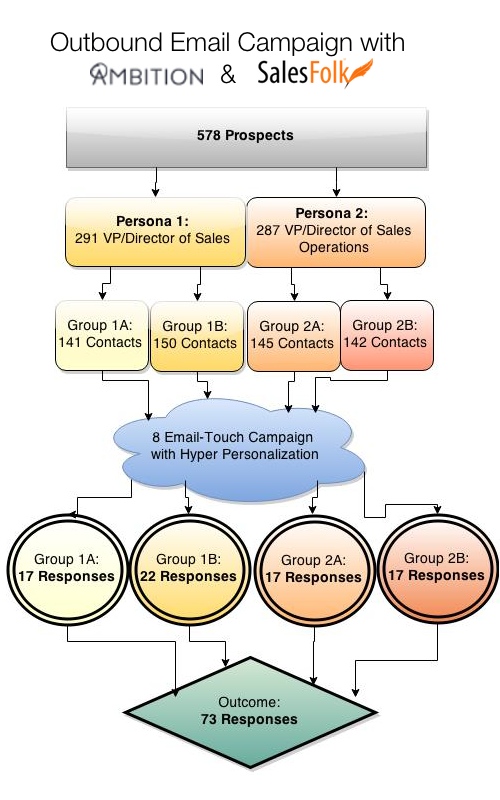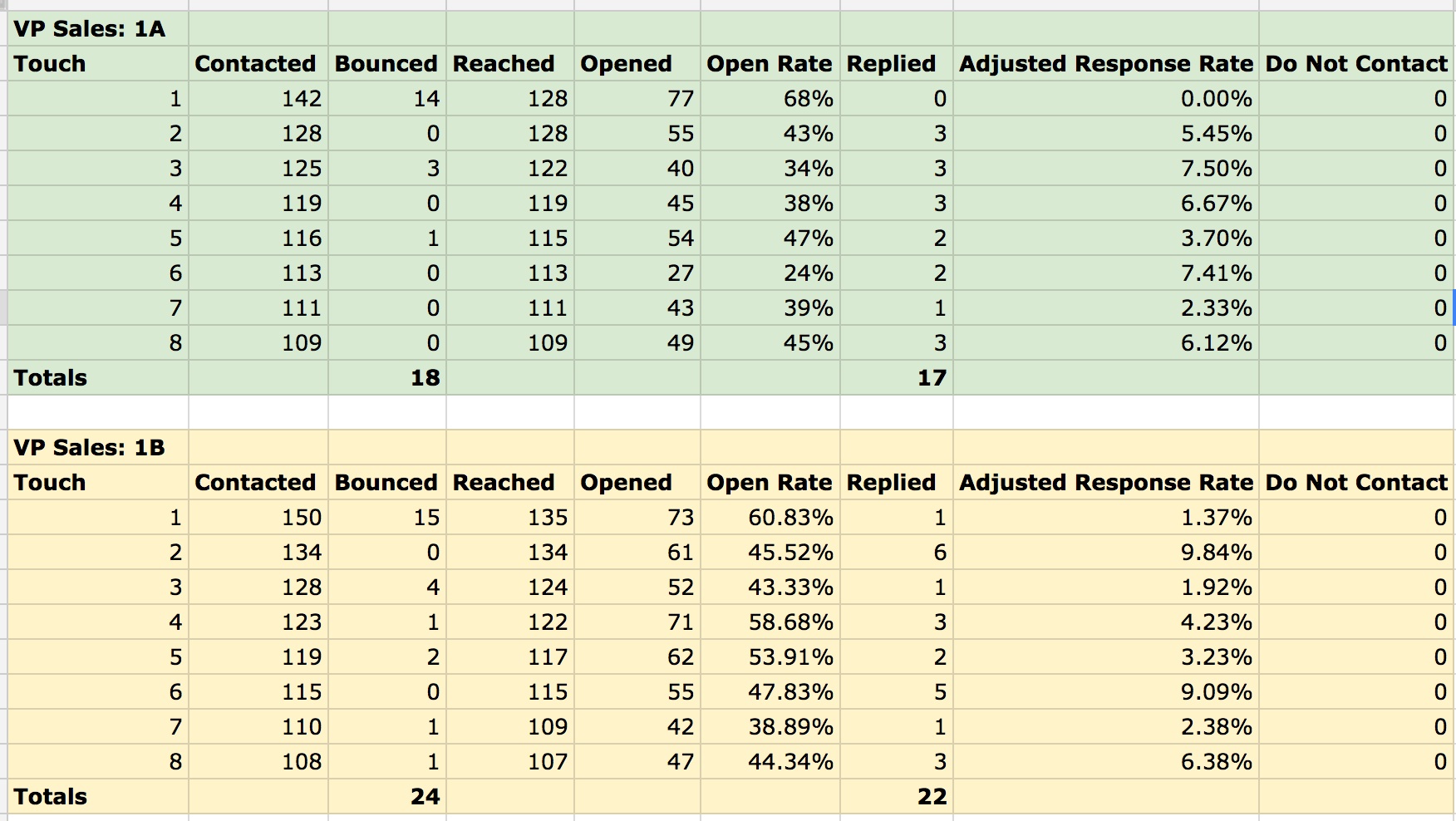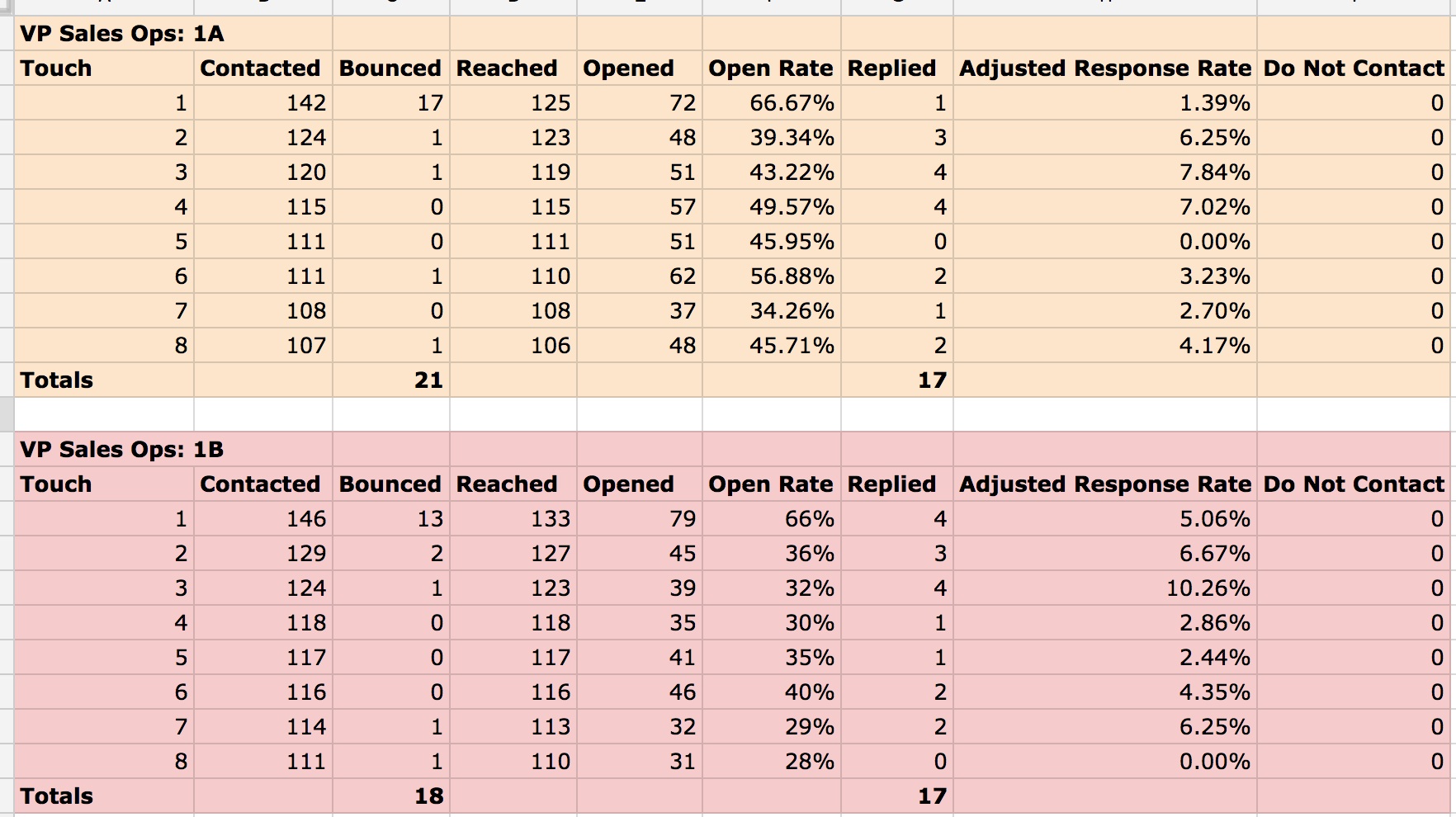How much should you personalize your sales emails?
Sending mass generic emails with zero personalization won’t get you many responses, but writing every email one at a time isn’t very scalable or cost-effective either.
So how much personalization is enough?
The truth is, there’s no magic one-size-fits-all answer.
It’s different for every business, and it depends on a number of factors, including who you’re targeting, how saturated your industry is with cold email, and how strong your product-market fit is.

Why You Need A Baseline of Your Email Metrics Before You Ever Think About Personalizing
While it’s generally true that more personalization in your sales emails will increase your response rate from qualified leads, adding more complex custom inserts beyond “first name” and “company” has its opportunity cost. Appending data like “competitor,” “blog post,” and custom sentences or phrases doesn’t just happen for free. Whether you’re purchasing that data, scraping, or using cheap outsourced labor/interns to gather information, it costs you time and money.
There is no guarantee the data you append will significantly increase your response rate either.
In some cases, adding additional custom inserts has no direct impact on response, and on rare occasions it can even have a negative effect, especially when data is appended haphazardly or carelessly.
Nor are all custom inserts are created equal. It’s true that in most cases adding the name of your prospects’ competitor will usually increase your response rate more than other inserts, but not always.
That’s why you should always send a basic email campaign with minimal personalization before you go crazy with trying to add more merge fields to your email templates. Once you have an idea of your baseline numbers for open rates, response rates, and appointments set, you can A/B test adding more customization to the same email templates. Then you can see just how much lift various personalization may or may not bring you.
If for example you have a 10% response rate with basic personalization, but you aren’t satisfied with those numbers, you can try adding various custom inserts to see how many more responses you get. When trying to assess if your increased response rate is worth your personalization efforts or not, you should multiply the increase in positive responses by how much you value a response or sales appointment with a qualified lead. After backing out those numbers, you can calculate if the cost of appending that data is greater than or equal to the increased appointments. If it’s not, then it’s not really worth your time.
A simpler way to assess this is to see if the increase in response rates (if there is one) is minor or incremental. If it’s marginal, then you might want to do the math to decide whether personalization makes sense for your sales efforts, but if it’s large, then keep adding customization and start testing other custom inserts to see what else works.
Even if you don’t have luck with the first few kinds of custom inserts you try, that doesn’t mean that all extra personalization absolutely won’t work. Maybe you just haven’t found the right information to append yet.
When You Should Consider Personalizing Your Emails More
So when should you experiment with adding personalization versus just being content with your existing response rates?
It depends on your product, industry, and sales goals, but generally you want to add more personalization when:
- You’re trying to reach out to “difficult contacts,” that don’t easily respond to email, like C-suite executives in large enterprise companies, especially CIOs and CISOs.
- You’re in a crowded and competitive space where your audience is getting bombarded with emails.
- Your product is commoditized and not very exciting to prospects.
- Your company doesn’t have a lot of traction yet, and perhaps your audience needs to be educated more about your product.
Another good indicator to consider additional personalization is if your response rate is below 10%. However, that doesn’t mean personalization, or even cold emails for that matter, can solve all your sales problems.
Low response rates can also be signs that you:
- may not have a strong product-market-fit
- be reaching out to the wrong audience
- have entirely the wrong message and are focusing on the wrong benefits and pain points
Basic Tips to Personalize Your Emails Without Adding More Custom Inserts
Before you start investing time and resources into adding extra personalization, you should try some basic cold email copywriting tips to see how much lift they can get you. Implementing the following tactics can often help you 2-3x your open and response rates:
- Use more casual language to make your emails sound more like a conversation than a letter to the Queen of England. (Unless you’re trying to cold email the Queen herself!) Cut out formal language like, “Dear Mrs Morgan, I’m inquiring about…,” because it sounds impersonal and distant.
- Cut out everything that screams “salesy.” Stop addressing yourself as a sales employee at company X. That’s a dead giveaway you’re sales prospecting, and it’s a waste of your email’s prime real eastate. Instead, you should assume familiarity and dive right in with an introductory sentence that commands attention and/or engages them with a thoughtful question.
- Use first and second person throughout your email. Avoid using third person because it feels distant and does not evoke as strong of a connection or emotional response with your prospects. Instead, use words like, “I,” “we,” and “you.” (And try to use “you” more than “I” so you don’t sound too self-focused!)
- Define your ideal customer persona before you even start writing. Try to use the keywords, language, and tone that appeals to the audience you’re writing for, and your email will instantly sound more personal, without even adding more custom inserts.
Check out our copywriting guide for additional tips to help you personalize your cold emails at scale. If you need extra help, just drop us a line.





